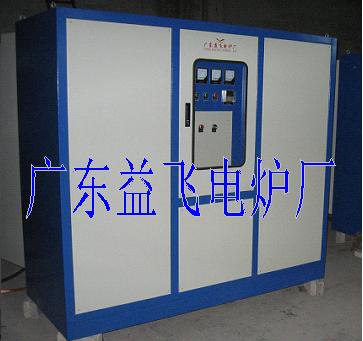Discussion on lining technology of induction melting furnace
Induction furnace has been used more and more to smelt all kinds of steel materials, especially in the alloy smelting of foundry workshop, induction furnace has been widely used. The foundry of Jinan No.2 Machine Tool Group Co., Ltd. has improved the furnace building process and the service life of furnace lining according to the working characteristics of induction furnace and the production practice of our company. In the past, the lining life of 500kg induction melting furnace was the highest 50 times and the lowest only a few times, and erosion and cracks often occurred, which seriously affected the production and economic benefits. Through the improvement of the ramming process of the lining, the proportion of the lining mixture, the tamping method and the sintering process, the service life of the lining is increased to more than 120 times, and the ramming process is simplified, so as to reduce the times of beating and drying, greatly reduce the consumption of lining materials and electric energy, reduce the production cost, shorten the production cycle, and have significant economic benefits.
1、 Improvement of insulation layer of induction furnace lining
When ramming furnace lining, 5mm asbestos board is generally used to separate induction coil and refractory crucible, so as to ensure good heat insulation and insulation performance of furnace lining. However, in the process of baking and sintering, the moisture in quartz sand and boric acid is difficult to drain, which often leads to the decline of insulation performance of furnace lining and the extension of drying time. After research, a small hole of & phi; 2 ~ 4mm is drilled on the asbestos board, which can not only speed up the timely discharge of moisture in quartz sand and boric acid, but also fix the bulk furnace lining well.
2、 The proportion of lining material and the selection of tamping method
The grain size ratio of quartz sand and tamping method affect the service life of furnace lining, which mainly affect the corrosion resistance and high temperature impact resistance of furnace lining. The results show that the corrosion resistance of the lining is directly proportional to the density of its matrix. The higher the density is, the denser the matrix structure is, and the stronger the corrosion resistance of the lining is. Based on the actual production of Jinan No.2 Machine Tool Group Co., Ltd., the formula of quartz sand shown in Table 1 is adopted. The improved formula shown in Table 2 is adopted for quartz sand at furnace mouth.
The lining crucible is divided into furnace bottom, furnace wall and furnace mouth. The furnace bottom bears the static pressure of all molten iron, especially the junction with the crucible wall is the weak link of the whole crucible, where the thickness is large, the heat dissipation is uneven, and cracks are easy to occur during sintering; the temperature of the furnace wall is high, and the static pressure, scouring force and chemical erosion of molten iron are serious; the temperature difference between the inside and outside of the furnace mouth is large, so it is difficult for the sintering temperature to reach the specified temperature, and cracks are easy to occur, which makes the furnace temperature stable Because of the overheated expansion of quartz sand, the whole lining moves up and the compactness of the lining is reduced. In view of this situation, the aluminum pressure plate is placed above the furnace mouth to prevent expansion. When ramming the furnace lining, it is generally operated by four people, and the method of four people changing positions is used to ramme the furnace lining, which can be that the rammed furnace lining has a relatively uniform compactness.
3、 Selection of boric acid dosage
Boric acid (h2bo3) plays an important role in bonding quartz sand mixture. When the boric acid content in the lining is more than 2.5%, the furnace life decreases significantly with the increase of boric acid content. After smelting, there are liquid crystals flowing down the furnace wall surface, and the erosion rate increases with the increase of boric acid content. Therefore, the amount of boric acid should be 2% ~ 2.5%.
4、 Selection of sintering method for furnace lining
In the process of melting hot metal, the furnace lining should bear the high temperature of 1550 ℃, which requires that the furnace lining should not melt and crack at high temperature, and at the same time, it should resist the erosion and corrosion of hot metal. Therefore, in addition to reasonable selection of quartz sand particle size ratio, boric acid dosage and tamping method of furnace lining, the sintering method of furnace lining should also be properly selected. In the past, the continuous power transmission and baking process was used, the flood furnace time was up to 10h, the energy consumption was serious, and the production efficiency was low.
Because quartz sand has different state transition under different temperature and heating rate, the drying process of initial baking, primary sintering and secondary sintering is adopted after the test, which not only saves energy, but also improves productivity.
The initial baking temperature is below 550 ℃, and wood is used for baking, mainly to drain the moisture from the lining.
The primary sintering is carried out at 550-1200 ℃, and boric acid is in the melting state, so that the quartz sand is transformed from quartz to quartz.
The second sintering was carried out at 1200-1450 ℃, and the quartz was fully transformed into phosphorite quartz. When the inner wall of the lining is burnt to form a whole melting water, when the burden is melted, the iron is cast after holding for 3-4h, and then continuously melted for 2-3 heats. Table 3 shows the sintering process of furnace lining.
Yiphee Electric Furnace Co.,Ltd specializes in producing induction furnace.Tel(WhatsApp):+86-13450756789, yiphee@yiphee.cn


